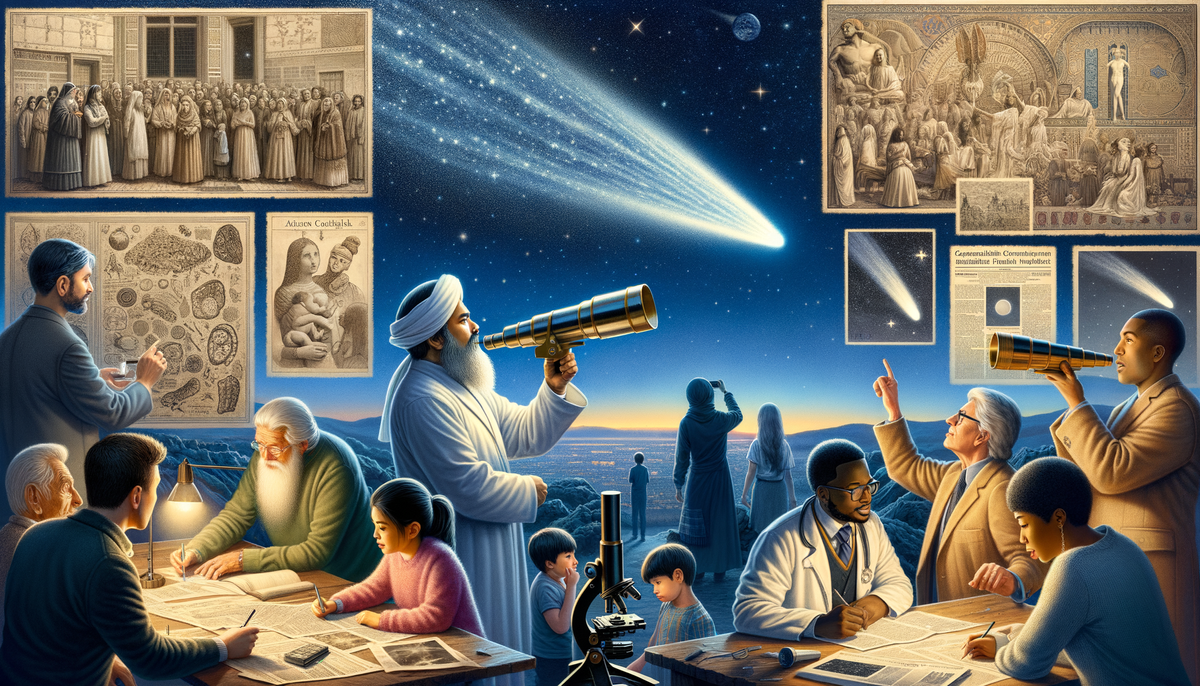Halley's Comet: A Celestial Journey Through Time
Explore the timeless allure of Halley's Comet and its impact on our cultural and scientific heritage.

Halley's Comet: A Celestial Journey Through Time
The Significance of Halley's Comet in 2025
As we turn our gazes skyward, Halley's Comet continues to fascinate astronomers and space enthusiasts alike. Though its next appearance is predicted for 2061, Halley's Comet's influence lingers, particularly through the Eta Aquarids meteor shower. Anticipated to peak in May 2025, this event allows us to witness the remnants of this renowned comet in a stunning celestial display.
Halley's Comet: A Historical Perspective
Designated 1P/Halley, this comet's periodic nature was first recognized by Edmond Halley in 1705. Using Isaac Newton's laws, he determined that the comets observed in 1531, 1607, and 1682 were indeed the same. Halley's prediction of its return in 1758, which came true after his death, immortalized his name in the annals of astronomy.
Considered the most ancient recorded sighting was by Chinese astronomers in 240 BCE, with potential earlier sightings in Greece in 466 BCE. The comet’s notable appearances have influenced many cultural events, such as its closest approach to Earth in 837 CE, depicted in the Bayeux Tapestry after it heralded the Norman conquest in 1066, and its possible inspiration for artistic works like Giotto’s Star of Bethlehem.
Orbital and Scientific Characteristics
Halley's Comet possesses a highly elongated orbit with a period typically ranging between 74 and 79 years. During its journey from within Venus's orbit at perihelion to beyond Neptune at aphelion, it becomes visible to the naked eye through the bright coma and tail that develop from solar radiation heating its icy nucleus. This physical spectacle is why Halley's Comet is prominently remembered, as seen during comprehensive observations in 1986 by interplanetary spacecraft.
Scientific Importance and Space Exploration
The comet's 1986 passage marked a significant leap in space exploration when it was imaged up close by European Space Agency's Giotto probe among others, paving the way for a deeper understanding of comet composition and movement.
Cultural Impact Over the Centuries
Throughout history, Halley's Comet has sparked imagination and superstition, often seen as an omen in historical texts. It has found its way into art, literature, and political narratives, influencing events as notable as the Norman conquest.
Looking Ahead: The Future of Halley's Comet
The comet's last perihelion occurred in 1986, with its subsequent passage anticipated in 2061. This period of dormancy, however, does not diminish its presence in scientific discussions and explorations today.
Practical Takeaways for Professionals in Astronomy
For astronomers and space agencies, the periodic appearance of Halley's Comet offers unparalleled opportunities for research and exploration. Previous encounters have underscored the importance of advancing technology to capture data and understanding. Engaging in collaborative studies during anticipated celestial events like the Eta Aquarids meteor shower is crucial.
Professionals in the field should focus on developing long-term observational strategies that are optimized for future comet approaches, enhancing our comprehension of these cosmic phenomena.
Call to Action: Engage with the Cosmic Wonder
Join us in unraveling the mysteries of Halley's Comet by staying updated on forthcoming meteor showers and participating in ongoing discussions within the astronomy community. Subscribe to our newsletter and delve deeper into the marvels of space exploration.




